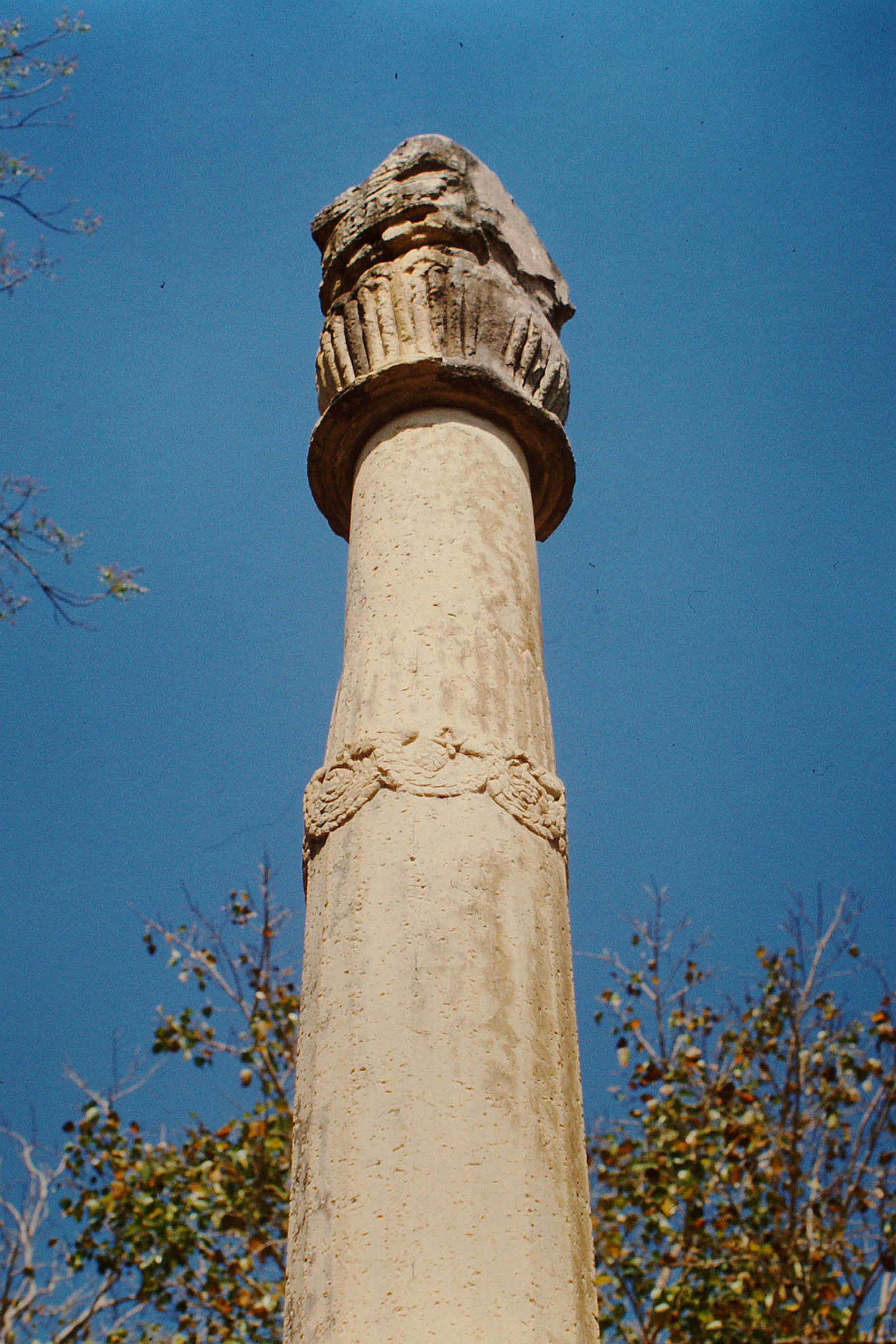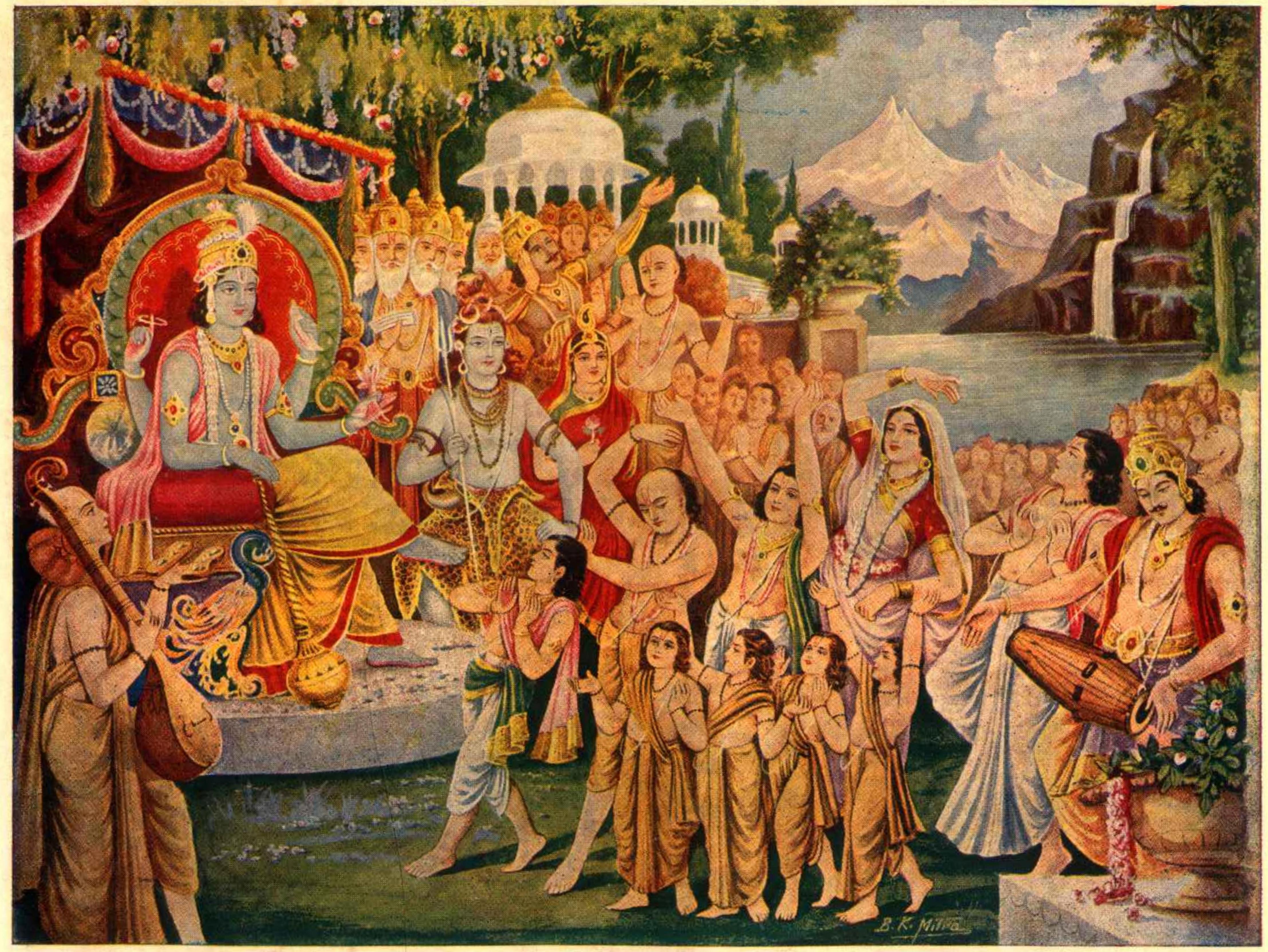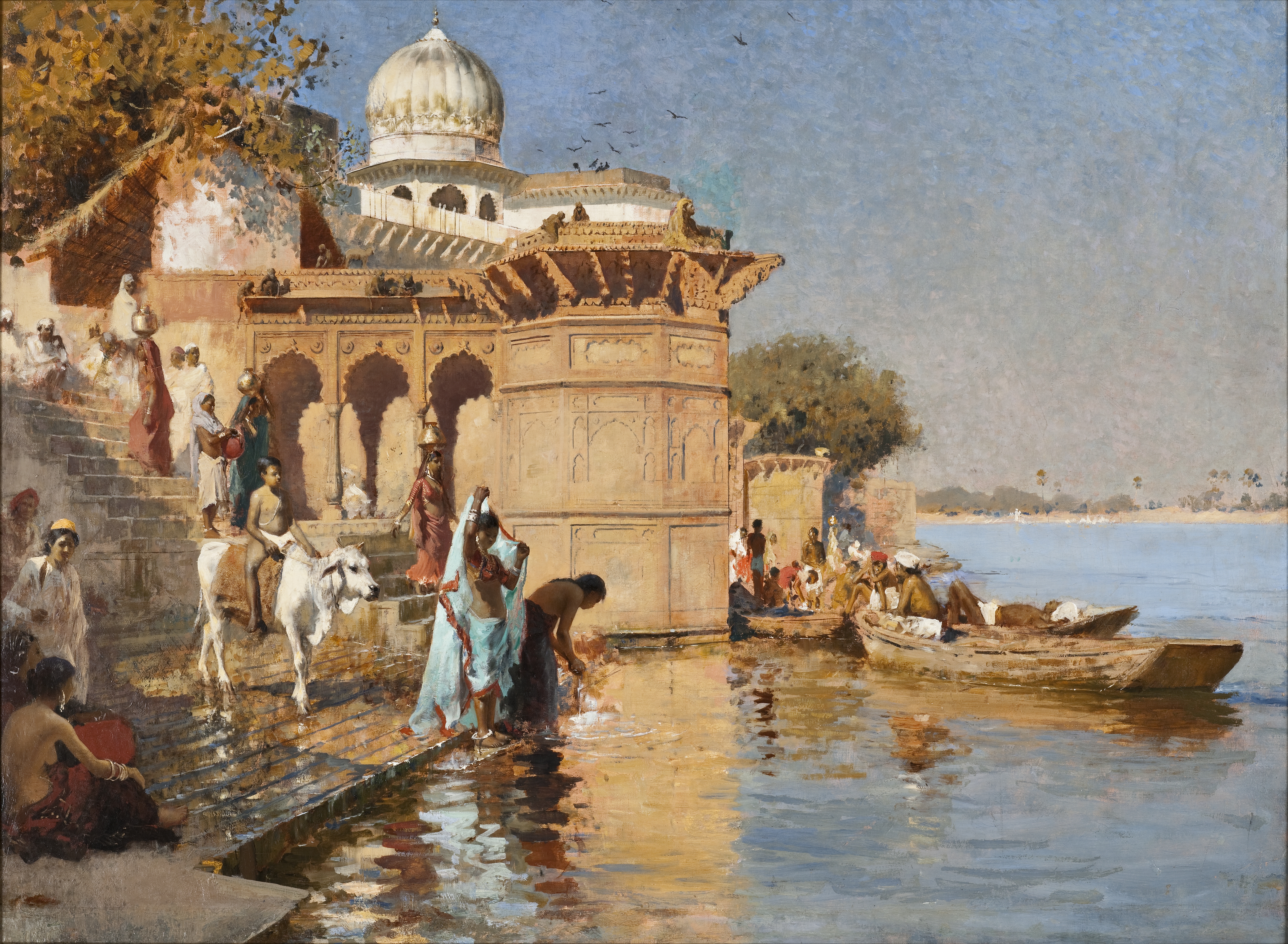|
Radha-vallabha
The Radha Vallabh Sampradaya is a Vaishnava Hindu denomination which began in 1535 at Vrindavan with the bhakti poet- sant Hith Harivansh Mahaprabhu (1502–1552). Harivansh's views are related to Krishnaism but emphasizes devotion to Radharani as the Supreme Being. Features According to the scholar Guy L. Beck, the Radha vallabh sampradaya has the following features, in comparison with Krishnaite traditions. # Its view on Radha and Krishna differentiates from normative Krishnaite theology. The ultimate Supreme Being is the Devi Radha, the Queen, while her consort Krishna is the penultimate step toward the supreme deity, her most intimate servant. # The tradition prefers to remain unaffiliated with any classical philosophical positions and previous four major Vaishnavite sampradayas. # It declines to produce theological and philosophical commentaries, basing on pure bhakti, divine love. # The founder and followers lived and live as householders and sannyasa is not praised. ... [...More Info...] [...Related Items...] OR: [Wikipedia] [Google] [Baidu] |
Krishnaism
Krishnaism (IAST: ''Kṛṣṇaism'') is a large group of independent Hindu traditions—sampradayas related to Vaishnavism—that center on the devotion to Krishna as '' Svayam Bhagavan'', ''Ishvara'', ''Para Brahman'', the source of all reality, who is not an avatar of Vishnu. This is its difference from such Vaishnavite groupings as Sri Vaishnavism, Sadh Vaishnavism, Ramaism, Radhaism, Sitaism etc. There is also a personal Krishnaism, that is devotion to Krishna outside of any tradition and community, as in the case of the saint-poet Meera Bai. Leading scholars do not define Krishnaism as a suborder or offshoot of Vaishnavism, considering it a parallel and no less ancient current of Hinduism. The teachings of the ''Bhagavad Gita'' can be considered as the first Krishnaite system of theology. Krishnaism originated in the late centuries BCE from the followers of the heroic Vāsudeva Krishna, which amalgamated several centuries later, in the early centuries CE, with the worshi ... [...More Info...] [...Related Items...] OR: [Wikipedia] [Google] [Baidu] |
Radha Vallabh Temple, Vrindavan
Shri Radha Vallabh Temple, also called Shri Radha Vallabhlal ji Temple is a historic temple in the city of Vrindavan, Mathura district, Uttar Pradesh, India. The temple is dedicated to Hindu deities Radha Krishna. The central deity of the temple is Krishna who is worshiped under the name of Shri Radha Vallabh which means the consort of Radha. Alongside Krishna, a crown is placed which signifies the presence of goddess Radha. The temple belongs to Radha Vallabh Sampradaya and was constructed in 16th century under the guidance of Vrindavan saint Hith Harivansha Mahaprabhu. History Old Radhavallabh Temple, which is presently known as ''Hith Mandir'' in Vrindavan was constructed in 1585 A.D by Sundardas Bhatnagar, a disciple of Shri Vanachandra, son of Hith Harivansh Mahaprabhu. At that time, Sundardas Bhatnagar of Deoband was under the employment of Abdul Rahim Khankhana, the chief head at Akbar's court. Through Abdul Rahim Khankhana, Sundardas Bhatnagar not only got the Royal ... [...More Info...] [...Related Items...] OR: [Wikipedia] [Google] [Baidu] |
Kirtan
Kirtana ( sa, कीर्तन; ), also rendered as Kirtan, is a Sanskrit word that means "narrating, reciting, telling, describing" of an idea or story, specifically in Indian religions. It also refers to a genre of religious performance arts, connoting a musical form of narration or shared recitation, particularly of spiritual or religious ideas, native to the Indian subcontinent. With roots in the Vedic ''anukirtana'' tradition, a kirtan is a call-and-response style song or chant, set to music, wherein multiple singers recite or describe a legend, or express loving devotion to a deity, or discuss spiritual ideas. It may include dancing or direct expression of ''bhavas'' (emotive states) by the singer. Many kirtan performances are structured to engage the audience where they either repeat the chant,Sara Brown (2012), ''Every Word Is a Song, Every Step Is a Dance'', PhD Thesis, Florida State University (Advisor: Michael Bakan), pages 25-26, 87-88, 277 or reply to the call o ... [...More Info...] [...Related Items...] OR: [Wikipedia] [Google] [Baidu] |
Vaishnavism
Vaishnavism ( sa, वैष्णवसम्प्रदायः, Vaiṣṇavasampradāyaḥ) is one of the major Hindu denominations along with Shaivism, Shaktism, and Smartism. It is also called Vishnuism since it considers Vishnu as the sole Para Brahman, supreme being leading all other Hindu deities, i.e. ''Mahavishnu''. Its followers are called Vaishnavites or ''Vaishnava''s (), and it includes sub-sects like Krishnaism and Ramaism, which consider Krishna and Rama as the supreme beings respectively. According to a 2010 estimate by Johnson and Grim, Vaishnavism is the largest Hindu sect, constituting about 641 million or 67.6% of Hindus. The ancient emergence of Vaishnavism is unclear, and broadly hypothesized as a History of Hinduism, fusion of various regional non-Vedic religions with Vishnu. A merger of several popular non-Vedic theistic traditions, particularly the Bhagavata cults of Vāsudeva, Vāsudeva-krishna and ''Gopala-Krishna, Gopala-Krishna'', and Narayana, ... [...More Info...] [...Related Items...] OR: [Wikipedia] [Google] [Baidu] |
Vaishnava
Vaishnavism ( sa, वैष्णवसम्प्रदायः, Vaiṣṇavasampradāyaḥ) is one of the major Hindu denominations along with Shaivism, Shaktism, and Smartism. It is also called Vishnuism since it considers Vishnu as the sole supreme being leading all other Hindu deities, i.e. '' Mahavishnu''. Its followers are called Vaishnavites or ''Vaishnava''s (), and it includes sub-sects like Krishnaism and Ramaism, which consider Krishna and Rama as the supreme beings respectively. According to a 2010 estimate by Johnson and Grim, Vaishnavism is the largest Hindu sect, constituting about 641 million or 67.6% of Hindus. The ancient emergence of Vaishnavism is unclear, and broadly hypothesized as a fusion of various regional non-Vedic religions with Vishnu. A merger of several popular non-Vedic theistic traditions, particularly the Bhagavata cults of Vāsudeva-krishna and '' Gopala-Krishna'', and Narayana, developed in the 7th to 4th century BCE. It was i ... [...More Info...] [...Related Items...] OR: [Wikipedia] [Google] [Baidu] |
Bankey Bihari Temple
Bankey Bihari Temple is a Hindu temple situated in the town of Vrindavan, Mathura district of Uttar Pradesh, India. The temple is dedicated to Bankey Bihari who is believed to be the combined form of Radha and Krishna. Bankey Bihari was originally worshipped at Nidhivan, Vrindavan. Later, when Bankey Bihari temple was constructed around 1864, idol of Bankey Bihari was moved to new temple. The image of Radha Krishna's united form stands in the Tribhanga posture. Swami Haridas originally worshipped this devotional image under the name of Kunj-Bihari ("one who enjoys in the groves (Kunj) of Vrindavan"). 'Bānke' means 'bent', and 'Bihāri' or 'Vihāri' means 'enjoyer'. This is how Kṛiṣhṇa, who is bent in three places, got the name "Bānke Bihāri". According to Śrī Brahma-saḿhitā (verse 5.31), Brahma says the following about Kṛishna "I worship Govinda, the primeval Lord, round whose neck is swinging a garland of flowers beautified with the moon-locket, w ... [...More Info...] [...Related Items...] OR: [Wikipedia] [Google] [Baidu] |
Radha
Radha ( sa, राधा, ), also called Radhika, is a Hindu goddess and the chief consort of the god Krishna. She is worshiped as the goddess of love, tenderness, compassion, and devotion. She is the avatar of goddess Lakshmi and is also described as the chief of the '' Gopis'' (milkmaids). During Krishna's youth, she appears as his lover and companion. Many traditions and scriptures accord Radha the status of the eternal consort and wife of Krishna. Radha, as a supreme goddess, is considered as the female counterpart and the internal potency (''hladini shakti'') of Krishna, who resides in Goloka, the celestial abode of Radha Krishna. Radha is said to accompany Krishna in all his incarnations. In Radha Vallabh Sampradaya and Haridasi Sampradaya, only Radha is worshiped as the supreme deity. Elsewhere, she is venerated with Krishna as his principal consort in Nimbarka Sampradaya, Pushtimarg, Mahanam Sampraday, Swaminarayan Sampradaya, Vaishnava-Sahajiya and Gaudiya V ... [...More Info...] [...Related Items...] OR: [Wikipedia] [Google] [Baidu] |
Mughal Empire
The Mughal Empire was an early-modern empire that controlled much of South Asia between the 16th and 19th centuries. Quote: "Although the first two Timurid emperors and many of their noblemen were recent migrants to the subcontinent, the dynasty and the empire itself became indisputably Indian. The interests and futures of all concerned were in India, not in ancestral homelands in the Middle East or Central Asia. Furthermore, the Mughal empire emerged from the Indian historical experience. It was the end product of a millennium of Muslim conquest, colonization, and state-building in the Indian subcontinent." For some two hundred years, the empire stretched from the outer fringes of the Indus river basin in the west, northern Afghanistan in the northwest, and Kashmir in the north, to the highlands of present-day Assam and Bangladesh in the east, and the uplands of the Deccan Plateau in South India. Quote: "The realm so defined and governed was a vast territory of some , ra ... [...More Info...] [...Related Items...] OR: [Wikipedia] [Google] [Baidu] |
Mathura
Mathura () is a city and the administrative headquarters of Mathura district in the states and union territories of India, Indian state of Uttar Pradesh. It is located approximately north of Agra, and south-east of Delhi; about from the town of Vrindavan, and from Govardhan. In ancient times, Mathura was an economic hub, located at the junction of important caravan (travellers), caravan routes. The 2011 Census of India estimated the population of Mathura at 441,894. In Hinduism, Mathura is birthplace of Krishna, which is located at the Krishna Janmasthan Temple Complex. It is one of the Sapta Puri, the seven cities considered holy by Hindus, also called Mokshyadayni Tirth. The Kesava Deo Temple was built in ancient times on the site of Krishna's birthplace (an underground prison). Mathura was the capital of the kingdom of Surasena, ruled by Kamsa, Kansa, the maternal uncle of Krishna. Mathura is part of the Lord Krishna circuit (Mathura,Vrindavan,Barsana, Govardhan, 48 ko ... [...More Info...] [...Related Items...] OR: [Wikipedia] [Google] [Baidu] |
Yamuna
The Yamuna (Hindustani: ), also spelt Jumna, is the second-largest tributary river of the Ganges by discharge and the longest tributary in India. Originating from the Yamunotri Glacier at a height of about on the southwestern slopes of Bandarpunch peaks of the Lower Himalaya in Uttarakhand, it travels a total length of and has a drainage system of , 40.2% of the entire Ganges Basin. It merges with the Ganges at Triveni Sangam, Allahabad, which is a site of the Kumbh Mela, a Hindu festival held every 12 years. Like the Ganges, the Yamuna is highly venerated in Hinduism and worshipped as the goddess Yamuna. In Hinduism she is the daughter of the sun god, Surya, and the sister of Yama, the god of death, and so is also known as Yami. According to popular legends, bathing in its sacred waters frees one from the torments of death. It crosses several states: Haryana and Uttar Pradesh, passing by Uttarakhand and later Delhi, and meeting its tributaries on the way, inclu ... [...More Info...] [...Related Items...] OR: [Wikipedia] [Google] [Baidu] |
Aurangzeb
Muhi al-Din Muhammad (; – 3 March 1707), commonly known as ( fa, , lit=Ornament of the Throne) and by his regnal title Alamgir ( fa, , translit=ʿĀlamgīr, lit=Conqueror of the World), was the sixth emperor of the Mughal Empire, ruling from July 1658 until his death in 1707. Under his emperorship, the Mughals reached their greatest extent with their territory spanning nearly the entirety of South Asia. Widely considered to be the last effective Mughal ruler, Aurangzeb compiled the Fatawa 'Alamgiri and was amongst the few monarchs to have fully established Sharia and Islamic economics throughout South Asia.Catherine Blanshard Asher, (1992"Architecture of Mughal India – Part 1" Cambridge university Press, Volume 1, Page 252. Belonging to the aristocratic Timurid dynasty, Aurangzeb's early life was occupied with pious pursuits. He held administrative and military posts under his father Shah Jahan () and gained recognition as an accomplished military commander. Aur ... [...More Info...] [...Related Items...] OR: [Wikipedia] [Google] [Baidu] |
Radhastami
Radhashtami is a Hindu holy day commemorating the birth anniversary of the goddess Radha, the chief consort of the god Krishna. It is celebrated with great fervor in her birthplace Barsana and the entire Braj region on the eighth day (Ashtami) of the Shukla Paksha of the month of Bhadrapada. The festival suggests that goddess Radha is very much an aspect of the cultural-religious faith system governing social life of people. History In the ''Viṣṇu Khaṇḍa'' of the Skanda Purana, it is mentioned that God Krishna had 16,000 gopis out of which Goddess Radha was the most prominent one. According to Hindu calendar, Radharani was born on the 8th day (Ashtami) of the bright fortnight (Shukla Paksha) in the month of Bhadrapada in Anuradha Nakshatra at 12 noon in town of Barsana (Rawal), Uttar Pradesh, India. As per the Gregorian calendar, her birth date was believed to be 23 September 3221 BC- a Wednesday. Goddess Radha was found on the golden lotus in the pond by king Vrisha ... [...More Info...] [...Related Items...] OR: [Wikipedia] [Google] [Baidu] |








